Yi Mon had asked us to meet her in reception at 7.30 am so that we could make a couple of visits before having to return to the ship in time for it to start its journey to Mandalay at 9.30 am.
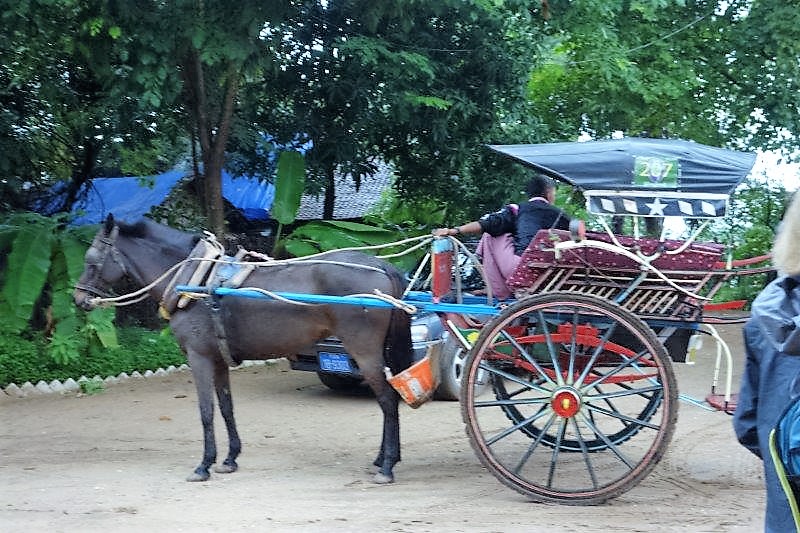 Some of the passengers were more adventurous than our small group and spent their time exploring on bicycles. The horse looked well fed and well groomed so we chose to go by horse and cart!
Some of the passengers were more adventurous than our small group and spent their time exploring on bicycles. The horse looked well fed and well groomed so we chose to go by horse and cart!
Our first visit was to Shwezigon Paya Temple which was built in the late 11th century. The Shwezigon Paya (pagoda, stupa or zedi), is one of Bagan’s and Myanmar’s most significant religious structures.
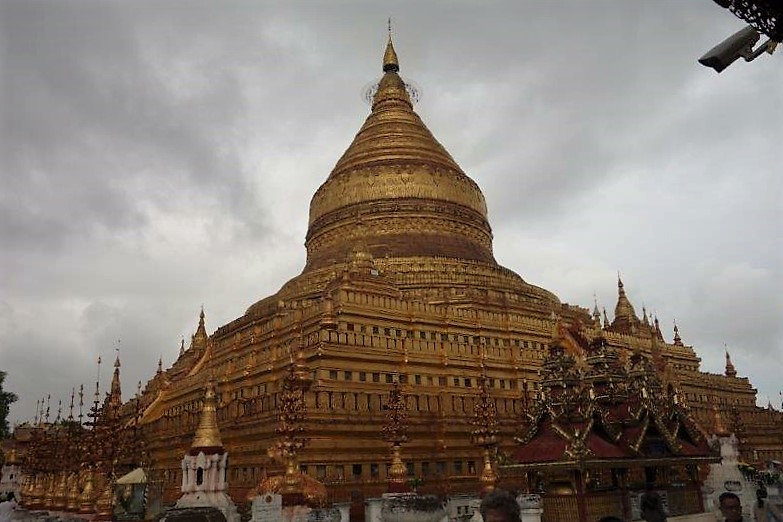 Located four miles northeast of Old Bagan at the edge of the most important regional town of Nyaung U, it truly is a national pagoda, since it served as a prototype for many later stupas built throughout Myanmar. The Shwezigon is also a major national centre of worship. Pilgrims come from many parts of Myanmar for its festival, held during the Burmese month of Nadaw (November/December) both because of its historic character and because of its religious significance for Burmese Buddhism.
Located four miles northeast of Old Bagan at the edge of the most important regional town of Nyaung U, it truly is a national pagoda, since it served as a prototype for many later stupas built throughout Myanmar. The Shwezigon is also a major national centre of worship. Pilgrims come from many parts of Myanmar for its festival, held during the Burmese month of Nadaw (November/December) both because of its historic character and because of its religious significance for Burmese Buddhism.
While the Shwezigon was one of the earliest symbols of the triumph of the purified Theravada Buddhism, it was also the first pagoda to allow ‘nat’ images (pre-Buddhist spirits who had the power to do good or evil) within its walls.
Its original builder, King Anawrahta, who reigned from 1044-1077, even had images of the 37 traditional nats put on the lower terraces. As a result, nat worship joined for the first time with the nascent Theravada Buddhism to form a unique and vibrant Burmese religious experience that also contributed to the general growth of Theravada. Eventually, the nats of Shwezigon were removed from the terraces to a small hall within the compound, but the Shwezigon Festival still brings multitudes to honour and worship the nats at Shwezigon.
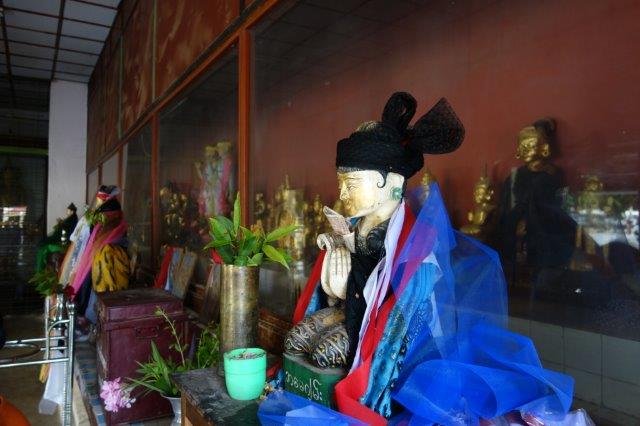 Amongst the individual villages, religious beliefs also vary greatly. Although there are the thirty-seven main nats that are commonly and communally worshiped, there are also many local nats, differing in every village. To add on to this, the idea that after death one may become a nat also implies that there are many nats that can be worshiped. For some villages, nats are in nearly everything. They can be any ancestors, arising from nature, found guarding objects etc. For others, nats are less prominent, but still play some role in the village society.
Amongst the individual villages, religious beliefs also vary greatly. Although there are the thirty-seven main nats that are commonly and communally worshiped, there are also many local nats, differing in every village. To add on to this, the idea that after death one may become a nat also implies that there are many nats that can be worshiped. For some villages, nats are in nearly everything. They can be any ancestors, arising from nature, found guarding objects etc. For others, nats are less prominent, but still play some role in the village society.
The precise origins of Burmese folk faith and nat worship are not definitively known. However at the time King Anawrahta was ruling, nat worship was rampant. He became frustrated with this widespread worship of nats and tried to eliminate them. The people continued to worship the nats, and so the king ordered the destruction of all statues and images of nats. Despite this people still worshiped them, by using a coconut as a symbol for them. Now in place of a typical nat statue, there sometimes sits a coconut, which serves as an offering to the nat, as well as a symbol for the nat itself.
The king came to the realization that he couldn’t possibly stop these nats from being worshiped, so he created a formal list of 37, strategically renaming the principal one Thagyamin, which was a name of Buddhist origin. He also placed statues of deva in front of the nats. This symbolized the preference for practising Buddhism over folk faith. Despite continued opposition, this nat worship survived. A testament to the continued survival of Burmese folk religion can be seen by the fact that the prime minister of Burma in the mid-20th century, U Nu, erected a nat-sin (nat shrine) as well as a traditional Buddhist shrine. This tolerance of the nats continued through the socialist regime (1962-1968) and is still in place today.
King Anawrahta’s conversion to Theravada Buddhism in the mid-11th century had a profound influence on Bagan’s religious and cultural life. Anawrahta was Theravada’s first major advocate; he was also the first of the great builders of Bagan. He began construction of the Shwezigon (on a site reputedly chosen by a white elephant) as a massive and centrally important reliquary shrine to encase a variety of Buddha artifacts, including a copy of the Tooth of Kandy from Ceylon, frontal and collar bones, and an emerald Buddha image from China. Apparently, he had completed the three terraces before he (some say) was killed by a wild buffalo in 1077. Some contend that he had even completed a small stupa on the terraces and had plans to encase it in a larger structure.
The reliquary shrine was completed between 1086 and 1090 by King Kyanzittha who reigned from 1084-1113, Anawrahta’s probable son (the parentage question is a long story).
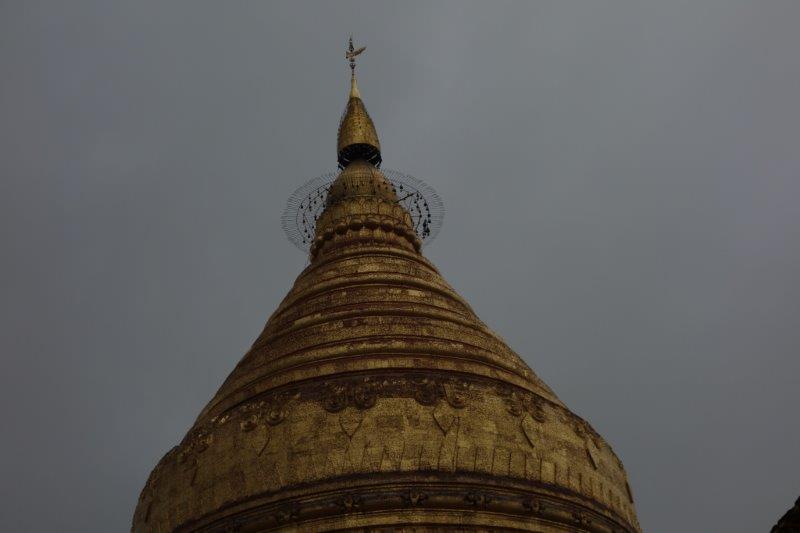 Kyanzittha was perhaps Bagan’s greatest king, and it was under him that Bagan became known, doubtless with a touch of exaggeration, as the ‘city of four million pagodas’. He did erect hundreds of monuments and also successfully championed the Mon Buddhist culture. When the symbolic ‘hti’, or umbrella, was put into place over the Shwezigon in 1090, the reliquary shrine had essentially taken on the shape that it has today.
Kyanzittha was perhaps Bagan’s greatest king, and it was under him that Bagan became known, doubtless with a touch of exaggeration, as the ‘city of four million pagodas’. He did erect hundreds of monuments and also successfully championed the Mon Buddhist culture. When the symbolic ‘hti’, or umbrella, was put into place over the Shwezigon in 1090, the reliquary shrine had essentially taken on the shape that it has today.
 Earthquakes and other natural phenomena have, of course, taken their toll over the centuries, and it has been often repaired, perhaps most notably by King Bayinnaung who reigned from 1551-1581 in the late 16th century. The recent devastating earthquake of 1975 caused considerable damage to the spire and top of the dome that needed extensive repairs. Each attack on its main fabric doubtless introduced subtle and not-so-subtle changes to the structure. The pagoda, for example, is now encased by over 30,000 copper plates made possible through donations by local, national and international visitors. The entire structure was gilded in 1983-1984 and again more recently.
Earthquakes and other natural phenomena have, of course, taken their toll over the centuries, and it has been often repaired, perhaps most notably by King Bayinnaung who reigned from 1551-1581 in the late 16th century. The recent devastating earthquake of 1975 caused considerable damage to the spire and top of the dome that needed extensive repairs. Each attack on its main fabric doubtless introduced subtle and not-so-subtle changes to the structure. The pagoda, for example, is now encased by over 30,000 copper plates made possible through donations by local, national and international visitors. The entire structure was gilded in 1983-1984 and again more recently.  Yet the lower part of the stupa and terraces apparently remain largely as originally constructed in the 11th century.
Yet the lower part of the stupa and terraces apparently remain largely as originally constructed in the 11th century.
The Shwezigon is located at the
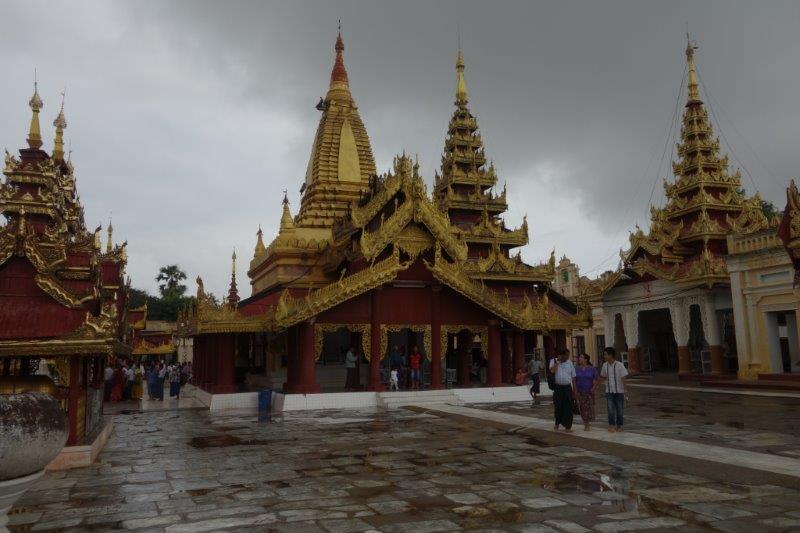 There are a large and varied number of shrines, monuments, smaller
There are a large and varied number of shrines, monuments, smaller
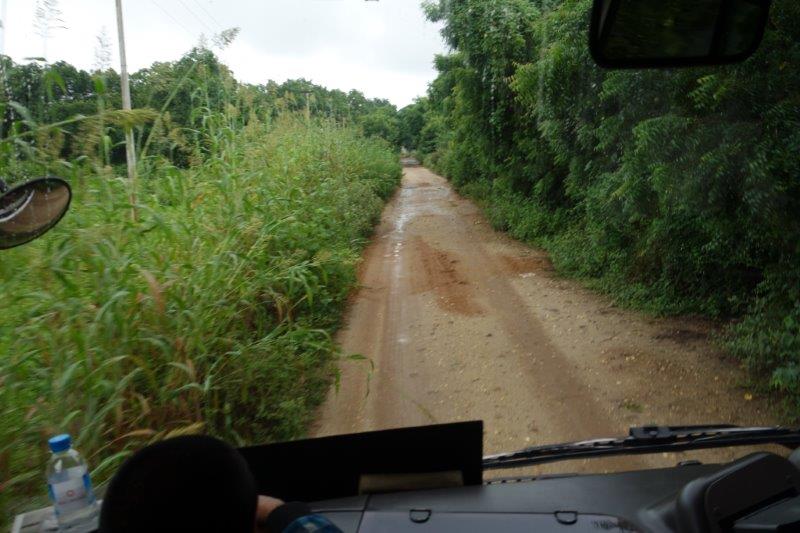 The roads between visits were often unpaved and single lane so negotiating the potholes and other traffic made our journeys slow at times. Some of them reminded me of our farm tracks in Pauatahanui!
The roads between visits were often unpaved and single lane so negotiating the potholes and other traffic made our journeys slow at times. Some of them reminded me of our farm tracks in Pauatahanui!
Our second stop was very short (and not half so impressive) because we had to get back to the boat and had spent more time than we meant to at the Shwezigon Zedi Temple.
 This was at Htilominlo Temple which is a Buddist temple located close to the road between Nyaung U and Bagan and about 1.5 km northeast of Bagan. It is known to be the last Myanmar- style temple built in Bagan.
This was at Htilominlo Temple which is a Buddist temple located close to the road between Nyaung U and Bagan and about 1.5 km northeast of Bagan. It is known to be the last Myanmar- style temple built in Bagan.
The temple is three stories (46m) tall and is built with red brick. It is also known for its elaborate plaster
 According to legend, Htilominlo was chosen to be the next King out of the five sons of King Narapatisithu. The five sons stood in a circle with a white umbrella in the
According to legend, Htilominlo was chosen to be the next King out of the five sons of King Narapatisithu. The five sons stood in a circle with a white umbrella in the
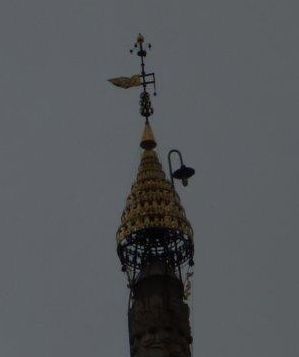 The top of the Htilominlo temple comprises a
The top of the Htilominlo temple comprises a
To protect this particular temple from decay, the terraces are closed and it is no longer possible to climb to the top so we admired it from the outside.
As soon as everyone was safely back on board, we set ‘sail’ towards Mandalay. The rest of the day was spent in educational activities including an introduction to all the staff, a safety session from the Captain and a demonstration of the various ways in which Longyi can be used both by men and women from Yi Mon.
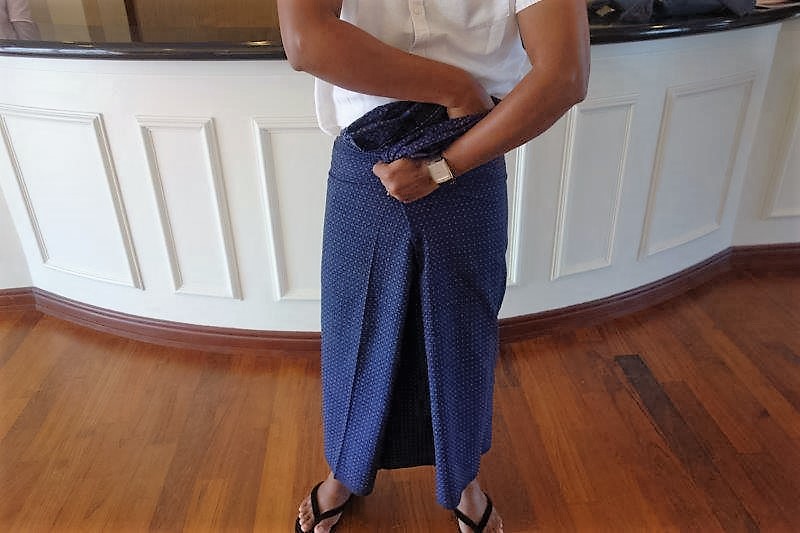 A Longhi is a sarong-like tube of fabric worn by both genders. They are called
A Longhi is a sarong-like tube of fabric worn by both genders. They are called
I was surprised at the end of our first day to find a longyi in my cabin and wasn’t quite sure what to do with it so I stored it in my wardrobe. However, at the end of the second day, I was presented with a
Following the longyi demonstration, Yi Mon gave us a demonstration of Thanakha, the natural makeup from Burma.
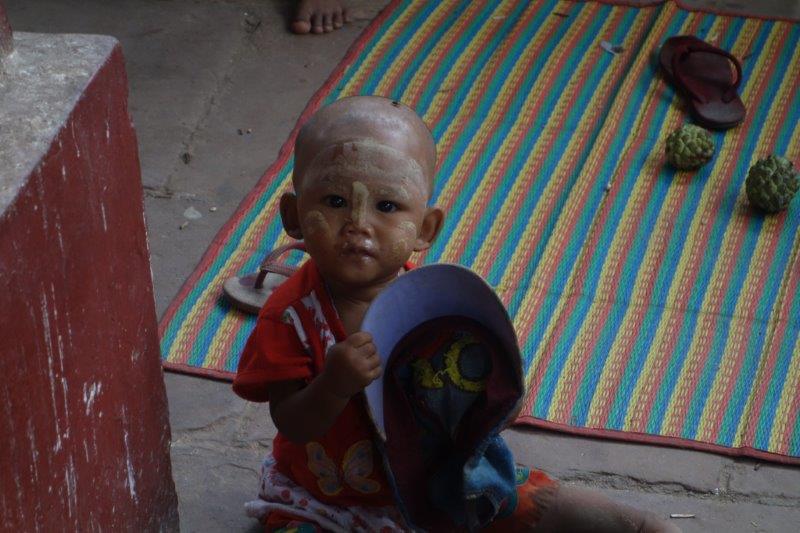 Thanakha is a distinctive feature of the culture of Myanmar, commonly seen applied to the face and sometimes to the arms of women and girls. It is also used to a lesser extent by men and boys and its use has also spread to
Thanakha is a distinctive feature of the culture of Myanmar, commonly seen applied to the face and sometimes to the arms of women and girls. It is also used to a lesser extent by men and boys and its use has also spread to
The wood of several trees may be used to produce
Thanaka cream is made by grinding the bark, wood, or roots of a
The cream has been used by Burmese women for over 2000 years. It has a fragrant scent somewhat similar to sandalwood. More water is added to the first application which is applied rather
Our final ‘education’ for the day was a presentation on Buddhism in Myanmar from Soe, the Assistant Tour Manager. He told that, for believing Buddhists, Siddhartha Gautama is Buddha, the Enlightened or Awakened One. He was born in 563 BC in Lumbini (present-day Nepal) and died in 483 BC in
Buddhism in Myanmar is predominantly of the Theravada tradition,
The final destination or goal of Buddhists is Nirvana. Ni means negative or nothing and Vana means suffering. Soe told us that Buddhism is more of a philosophy or a way of thinking that leads to true happiness, than a religion. The daily precepts of Buddhism are no killing, no stealing, no lying, no adultery and no alcohol. This may be what they aspire to but they may not all succeed all the time!
Monks, collectively known as the sangha, are venerated members of Burmese society. Among many ethnic groups in Myanmar, including the Bamar and Shan, Theravada Buddhism is
In September 2007, Buddhists took to the streets in the Saffron Revolution, a mass protest against the military government. Thousands of junta military and police forces poured into Yangon to try to control the situation, which rapidly deteriorated. A curfew was imposed and on 25 September, troops surrounded Sule Pagoda. The protest continued to grow with regular citizens joining to support and defend the Buddhists.
Overnight, junta forces invaded all the
In November 2008, U Gambira, a leader of the All Burma Monks’ Alliance, was sentenced to 68 years in prison, at least 12 years of which were to be hard
So far as I know, most of the passengers spent a restful afternoon following various pursuits while the boat continued on its route towards Mandalay. At 6.30 pm each day the boat has to drop anchor so we sat quietly overnight in the middle of the river.
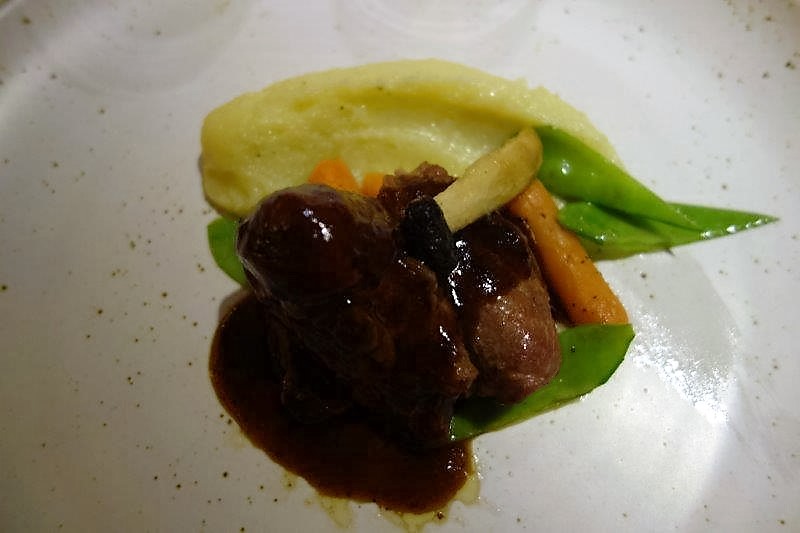 Pre-dinner drinks preceded another lovely dinner. The offerings are so delicious and so wonderfully prepared that it is hard to believe that my waistline will not be expanding at an alarming rate. The main course I chose tonight was a dish of New Zealand lamb that had been cooked for 14 hours! A teaspoon would have been a more appropriate utensil than the knife and fork I used, so tender was the meat.
Pre-dinner drinks preceded another lovely dinner. The offerings are so delicious and so wonderfully prepared that it is hard to believe that my waistline will not be expanding at an alarming rate. The main course I chose tonight was a dish of New Zealand lamb that had been cooked for 14 hours! A teaspoon would have been a more appropriate utensil than the knife and fork I used, so tender was the meat.
Dinner was followed by a magnificent ‘light show’ where we watched from the Observation deck as 1377 candles, previously lit and released by the crew from a point upstream, floated past the boat.
The number of candles signifies the year 1377 in Myanmar which works off a lunar, as opposed to a solar (2015), calendar.
 Clearly, it was very hard to photograph in the pitch darkness. I tried to catch a single candle as it floated past but it was bobbing up and down in the tide so it was hard to capture
Clearly, it was very hard to photograph in the pitch darkness. I tried to catch a single candle as it floated past but it was bobbing up and down in the tide so it was hard to capture
 I also tried to get a sense of some of them as they approached but it ended up looking like a study in modern art – which was beautiful anyway – even if it didn’t really look quite like this in reality!
I also tried to get a sense of some of them as they approached but it ended up looking like a study in modern art – which was beautiful anyway – even if it didn’t really look quite like this in reality!
The purpose of the light show was partly to celebrate the Festival of Lights – ‘Thadingkyut’. This is a special time for those who want to marry. It is the month of love in Myanmar. The three months preceding the festival are the months of Buddhist Lent or Waso. Courting and marrying during these months are taboo. Lovers wait eagerly for the festival of lights, sometimes an entire year to tie the knot. No-one really knows how this tradition started but it is there and taken very seriously. This old custom is accepted without any dispute, even today.
